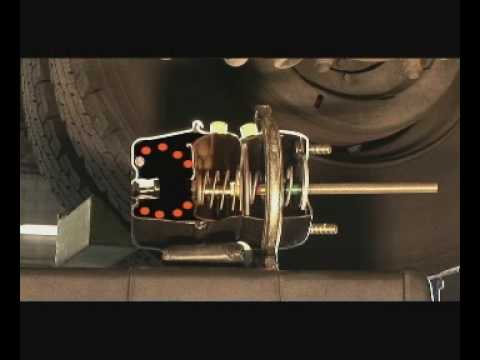Understanding The Basics Behind Air Brakes
The video below does an excellent job describing how air brakes work. If you are not familiar with the theory behind air brake systems the video will definitely help you understand the basics.
Air brakes have come a long way and now they are engineered using ABS technology. With less spin out it’s amazing how efficient they work. The new buses we are running right now have an ABS traction control that is used at slower speeds in the winter and once it’s activated helps drivers cope with slippery conditions.
Air Brakes Pressure Drop Test
When we perform a motor vehicle inspection the air system is tested for air loss while applying the air brakes. There must not be more than a 4 psi drop in air pressure over one minute with the foot brake valve applied and spring brakes off. Two people are required if air loss is detected. One person to apply the brakes while the other goes around and listens for leaks.
Air Build Up Time
Air compressor build time between 90 and 120 psi can not take more than 3 minutes. This is extremely important because recovery time needs to be fast enough to keep up with compressed air requirements while operating air brakes. The engine RPM should be operated around 1200 while doing this test.
The video shows the air chamber applying the push rod connected to the slack adjuster to apply the brakes. The force of the brake application is dependent on the running air pressure in the air tank reservoirs. (Force = Pressure X Area) so if you are running low on air the amount of pressure on the foundation brakes will be decreased.
The Visual Inspection
When inspecting the air brake system visually you need to check brake hoses, linings, drums, slack adjusters, brake chambers for wear and proper operation. The brake linings have a minimum thickness specification depending on your local Dept. Of Transportation regulations.
Motor Vehicle Inspections Rules Have Changed
In British Columbia we used to remove the wheels and brake drums to physically inspect the foundation brake components. Now the rules have changed making inspections much easier. The inspection covers (dust covers) are removed permanently so a visual can be performed.
The mechanical parts have to be checked to make sure everything is intact and working correctly. Another check is the wheel seal. Sometimes when wheel seals start to leak there is a possibility of oil contamination on the brake linings. The wheel has to be removed and the linings replaced.
Cam Rotation Meters
Since wheels do not require removal we are allowed to use cam rotation meters that are installed on the camshaft measuring the degree of wear on the brake drum. The limit of wear is 120 degrees so the brake chamber push rod travel moves the meter indicating how far the brake drum and lining can go before repair is required.
Auto Slack Adjusters
No longer is manual brake adjustment required. Auto slack adjusters are engineered to self adjust when too much push rod travel is recognized. The average push rod travel distance is 1.5 inches while the maximum is 2 inches. Regular maintenance is still required with auto slacks since they are not fail safe.
If the foundation brakes are faulty they will effect the accuracy of the slacks. Also it needs to be noted that auto slack adjusters must not be adjusted (only during installation) because your compensating for worn out foundation brake components.
121 Air Brake System Test
The 121 air brake system is the standard on a school bus and must be tested during a motor vehicle inspection. The test checks out the check valves which hold air in the tanks when another is drained. With a primary and secondary tank one runs the rear brakes while the other runs the front brakes.
When draining one of these tanks the other must keep air intact without loss to operate the air brakes on one axle. This is a safety feature to allow the operator to make several brake applications to bring the vehicle to a stop. Safety is the key word when operating any air brake system.
There’s so much more to talk about when it comes to air brakes. If you want to comment or ask a question please do so below!







